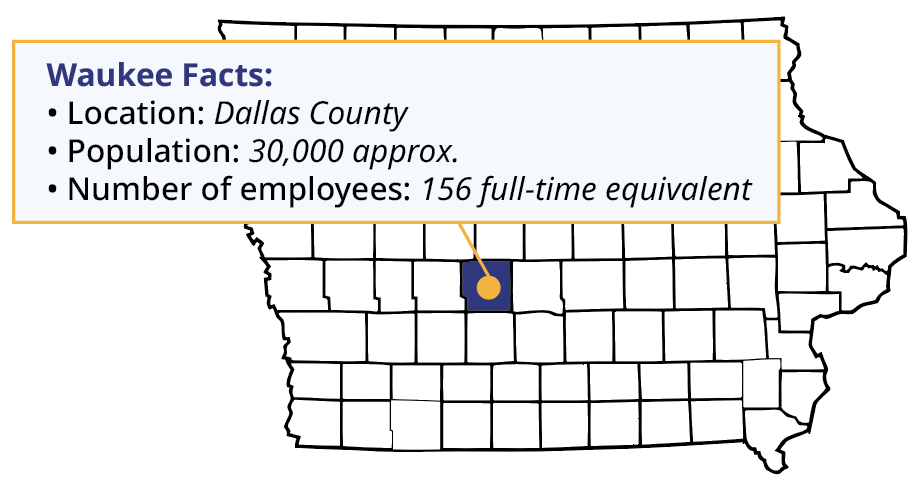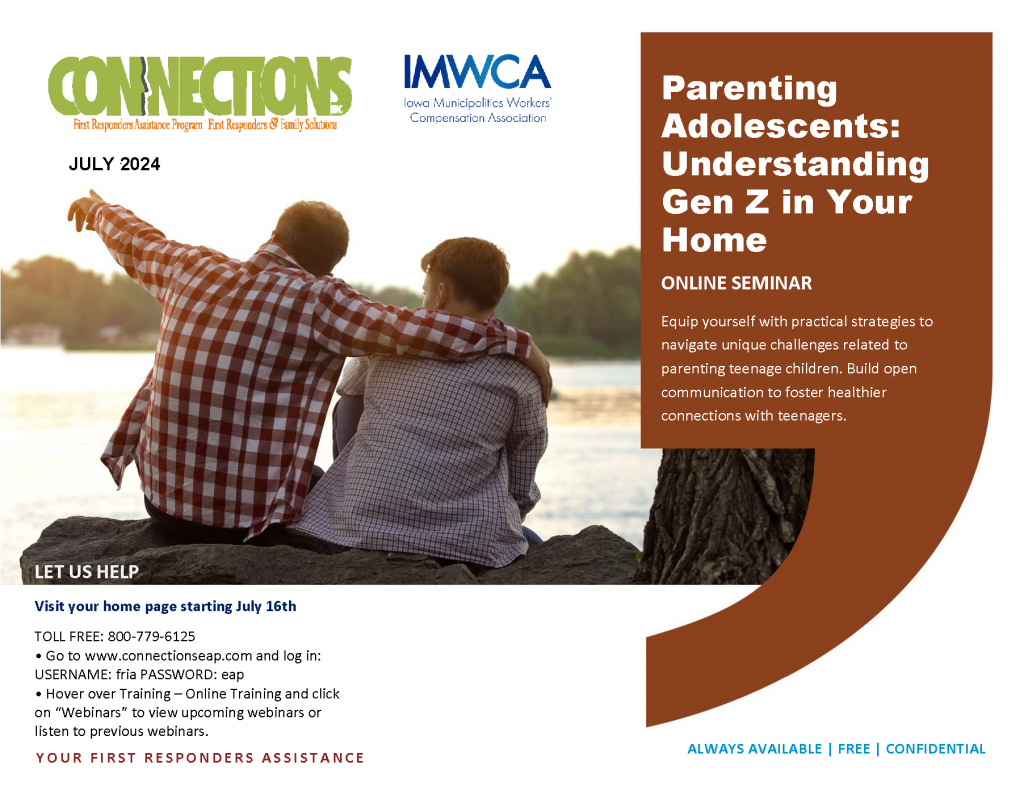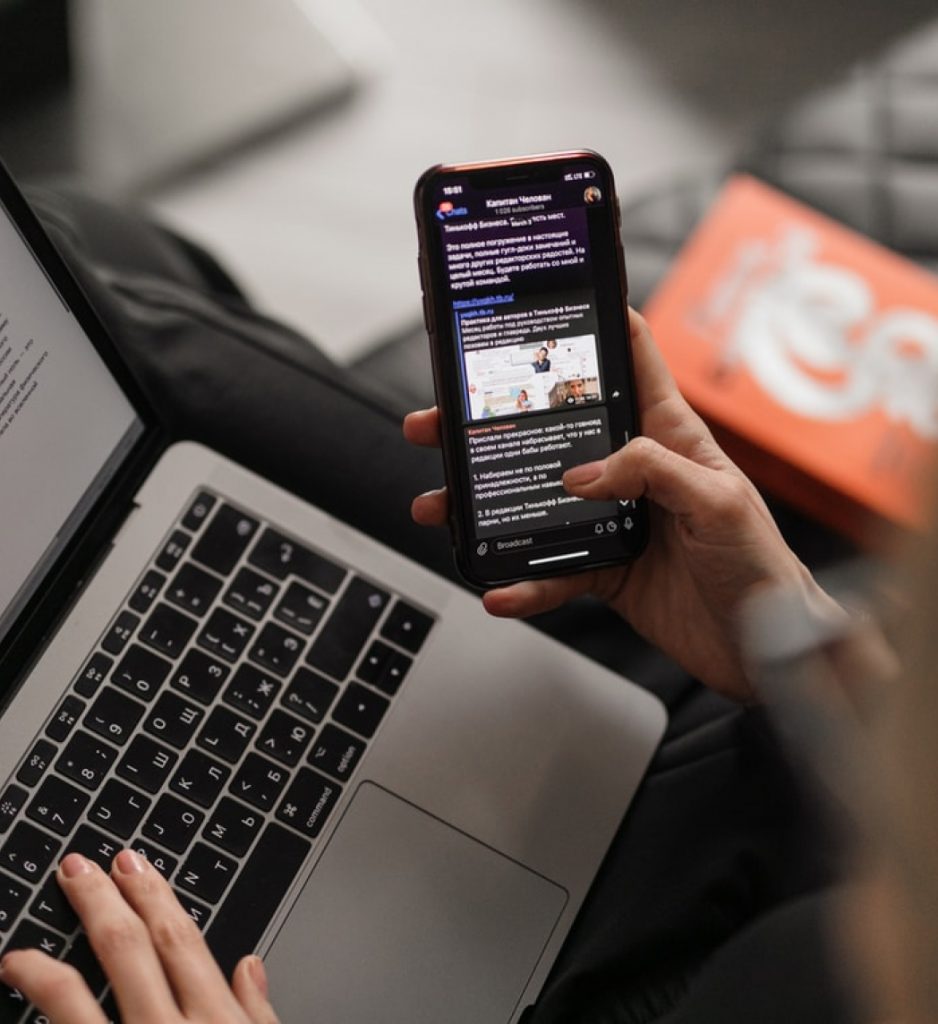
Distracted driving occurs when a driver attempts to do one or more other tasks besides driving and their attention becomes divided. When behind the wheel, drivers should always stay fully aware of their surroundings, remain focused on driving and avoid distractions.
Types of driving distractions:
- Making or taking calls
- Reading or sending text messages or emails
- Browsing the internet
- Social media
- GPS or maps app
- Taking photos
- Looking at any app on your phone
- Eating
- Daydreaming
- Opening food or drinks
- Smoking
- Reaching into the back seat for an item
- Allowing pets on your lap
- Personal grooming or looking in the mirror at yourself
Story County recognizes that distracted driving is a serious safety risk, not only to the driver but also to other occupants in the vehicle, other vehicles on the road and pedestrians. Story County prohibits certain conduct while driving County owned vehicles/equipment or while driving a personal vehicle while on County business. The safety and well-being of our employees is of critical importance to our organization. Activities which would require drivers to take both hands off of the wheel at the same time or their mind entirely off driving responsibilities are prohibited. Hands-free cell phone use, while driving, may be warranted in unusual or emergency circumstances and should be for a limited time. Extended cell phone conversations need to be held with the vehicle parked in a safe and legal parking area. Violation of this policy may subject an employee to corrective action up to and including termination.
Staying connected to the world and the temptation to glance quickly at your phone, along with many other types of distractions can cause devastating consequences. Pay attention while you play this fun online game and try to avoid the various types of distracted driving that constantly get in your way. Use the arrow keys to drive.
Check out IMWCA’s Safe Driver Manual.
When contacting Company Nurse, they ask several questions about the injured worker to help the claim process run smoothly. Do you provide guidance or training to your employees on how and why to answer Company Nurse questions? Let us know what guidance you are providing.
Member Highlight: Waukee

We recently asked the city to provide some insight on what they are doing to develop and maintain their safety culture.
Waukee has been a long-time member of the IMWCA. It has established a strong safety culture which has resulted in a low frequency of employee injuries and a steadily decreasing experience modification factor (EMF). The EMF has been in the .50s for the past four years and will achieve a new lowest EMF ever of .37 for the 2024/2025 policy year. This is also the new lowest EMF for any IMWCA member in the pool’s existence. We recently asked the city to provide some insight on what they are doing to develop and maintain their safety culture.
Why do you think the City of Waukee has been successful in providing a safe workplace?
Fire Department response: Each division in the city takes safety seriously, we invest in safety. We invest time in terms of initial and regular ongoing training. Funding is provided for various types of equipment and downtime for employees to keep safety in the minds of workers. Several divisions also review close calls and determine if additional training is needed or if a troubling pattern exists. Senior leadership also has an expectation that we create a culture of safety throughout the organization.
Police Department response: We are able to attract and retain highly qualified and skilled members to join our team. When people enjoy their environment/working conditions they are more apt to also ensure safety of those environments.
Public Works response: I’ll answer for PW specifically, I think our staff has the mindset that this is your work family and at the end of the day, everyone goes home safe and in one piece. Staff understand that safety starts with themselves and extends to their coworkers to ensure we have one another’s back.
Other comments: Partnership with Company Nurse to administer triage care for all work-related injuries. A “One Waukee” focus where employees help each other cross-departmentally. When it comes to working together and showing up as a team, I think this is where Waukee excels.
What do you do for safety training and how often?
Fire Department response: The fire division conducts safety training at least monthly. Training environment includes crew trainings, and required online trainings, including participation of the leadership team. Driver training is a significant focus for emergency response. We vary the length of training as well as using outside and internal instructors to maintain the focus of our staff.
Police Department response: Within the Police Department, nearly everything we do surrounds training for the safety of our teams whether in traffic, on calls for service, driving or other duties.
Public Works response: Various City staff (Public Works, Parks & Recreation, Community Development) participate in 15–60-minute safety training sessions approximately 1-2 times a month to review seasonally relevant and required safety topics. Waukee is a member of the Iowa Association of Municipal Utilities (IAMU) and as a member, we voluntarily participate (for a fee) in a multi-agency safety consortium. As a member of this group, our City has access to a safety coordinator who plans and leads these monthly training events, ensuring our needs are met and our staff feel prepared for their working environments.
Other comments: All employees have the opportunity to attend safety trainings conducted through the IAMU consortium if they choose. Additionally, the City offers CPR training and conducts an annual safety day event for all employees where they get hands-on experiences and information on several safety topics. All of the safety education and training the City offers its employees is not only beneficial in the workplace, but it can also be utilized in the personal lives of our employees.
Do you have a Designated Provider and a Return-To-Work Policy?
Yes, the City of Waukee has a designated provider for workplace injuries, and a thorough return-to-work policy laid out in our employee handbook, accessible to every employee.
Do you require Post Offer Physicals of new hires?
Fire Department response: The fire division requires a full NFPA 1582 physical for pre-employment for full and part-time employees. Post-employment physicals are on a regular basis, based on age. Full time city staff participate in annual wellness screenings that include lab values and health assessment and optional follow up education.
Other comments: The City requires post-offer physicals for all fire, police and CDL holder candidates.
What other proactive safety steps do you practice?
Fire Department response: We focus on a culture of safety. For example, if crews need to lift a heavy patient, the expectation is we call for assistance (if patient condition allows) rather than be in a hurry and risk injury. We have invested in equipment to prevent back injuries. We have purchased rolling/loading equipment to help load heavy fire hose. We have also invested in electronic lifting equipment for loading patients into the ambulance.
Police Department response: Within the PD, we conduct regular (monthly at a minimum) roll-call training on various topics of concern, we wrap safety into every training opportunity we have, and we regularly engage in discussions about how to be more conscious of safety in our workdays.
What words of wisdom do you have for other members of IMWCA to help them develop their safety culture?
Fire Department response: Leadership and staff need to hold each other accountable for a safe working environment. Freely discussing the direct and indirect cost of employee injuries (on and off the job) has been successful in this organization obtaining buy-in from all levels of staff. We view health and fitness as an aspect of safety and the city has several incentive programs to encourage a healthy lifestyle.
Public Works response: I would encourage the exploration of group safety trainings, whether they are internal departments or neighboring agencies, we are all looking for similar training needs, how can these needs be leveraged collectively and frugally.
Other comments: Follow up with injured employees. Check-in on them after the injury and make sure they know you (the company, city, entity ) care. Talk about safety. Offer continuous training opportunities. Make people aware of potential risks. Let employees know that there is an expectation of working safely, but also realize that accidents happen. Support employees in getting the help they need without issue.
In conclusion:
The City knows its employees are the heart and soul of our organization. Each one of them brings invaluable skills, dedication, and passion to our workplace, making us stronger and more dynamic. It is with this in mind that we prioritize the safety of our employees.
Safety is not just a set of rules or guidelines; it is a commitment to ensuring that everyone returns home safely at the end of each day. We believe that by fostering a culture of safety, we create a more productive and supportive work environment.

With Summer being in full swing, many people recognize the dangers from the sun’s heat. However, the force that creates the heat of the sun also represents another significant hazard in UV radiation. Anyone who has suffered from severe sunburn understands the pain associated with this condition. While the discomfort of a sunburn is temporary, the same radiation is also responsible for creating skin cancer. Although many people enjoy having a deep golden tan, the long-term adverse effects on your skin make it a serious gamble. To protect yourself from sunburns and skin cancer, there are several options you can use.
First, wear clothing to shield the skin from ultraviolet rays. Many performance clothing manufacturers now make outdoor sport and work clothing with an SPF/UPF rating. This clothing is lightweight, cooling, and comes in many colors. Shirts, pants, shorts and hats are all available in this fabric.
SPF Rating System
SPF measurements are done on human subjects. SPF is a gauge of how much time a person can be exposed to the sun before getting burned. For example, if you burn in 10 minutes without sunscreen and you apply a liberal dose of sunscreen with an SPF number of 15, you should be protected from a sunburn for 150 minutes. Although sunscreens with identical SPF numbers give you equivalent sunburn protection from UVB rays, no sunscreen product screens out all UVA rays. Some may advertise UVA protection, but the current SPF standard does not measure the amount of UVA protection.
UPF Rating System
UPF measurements of fabrics are generally tested by spectrophotometer equipment and are not tested using human subjects. The UPF rate indicates how much of the sun’s UV radiation is absorbed by the fabric. For example, a fabric with a UPF rating of 50 only allows 1/50th of the sun’s UV radiation to pass through it. This means that this fabric will reduce your skin’s UV radiation exposure by 50 times (98% UV block) in areas where the skin is protected by the fabric.
Whatever type of clothing you choose to use, make sure the rating is sufficient for the amount of time you spend outside.
Use Sunscreen
For the skin that is not covered by clothing, select and apply a broad-spectrum SPF 50+ sunscreen to your skin every two hours. You may need to reapply more if you are going in the water or sweating. Reapplying sunscreen is important because its SPF is only effective for 80 minutes to two hours. For body parts more susceptible to burning, such as ears and the nose, a zinc oxide compound with an SPF of 100 is recommended.
Contrary to popular belief, getting a tan will not protect your skin from sunburn or further skin damage. The extra melanin in tanned skin provides a sun protection factor (SPF) of about 2 to 4, which is far below the minimum SPF of 30.
For OSHA purposes, sunscreen is considered an over-the-counter (OTC) drug and a common container should not be shared among employees.





